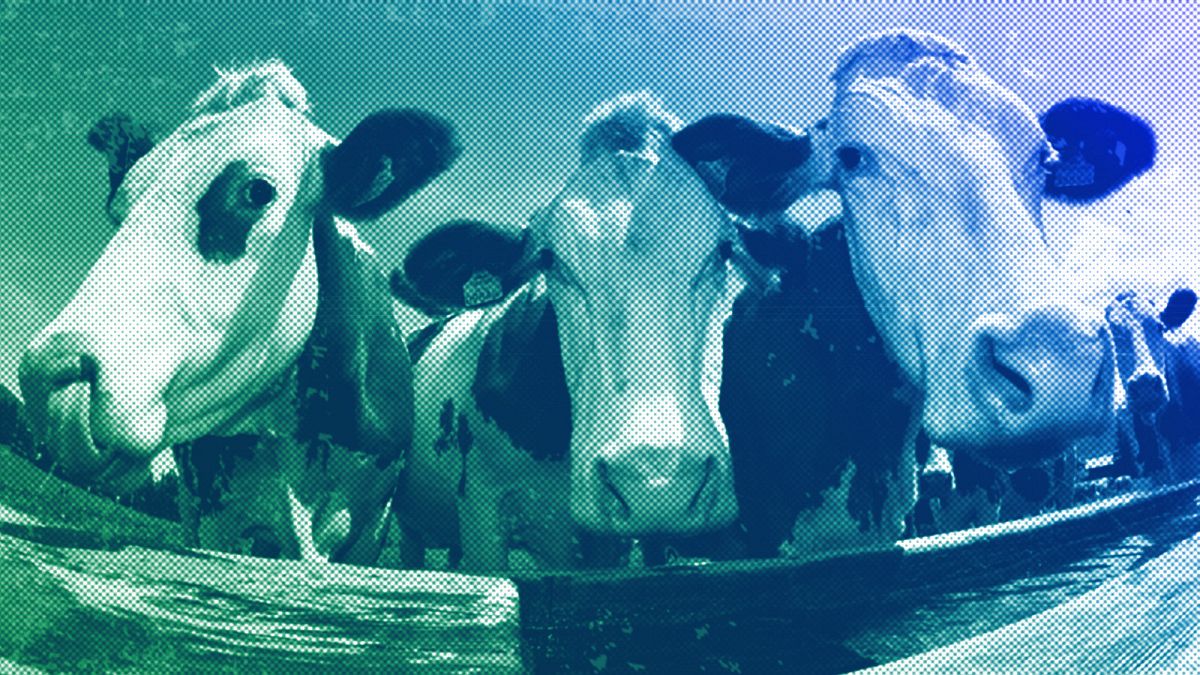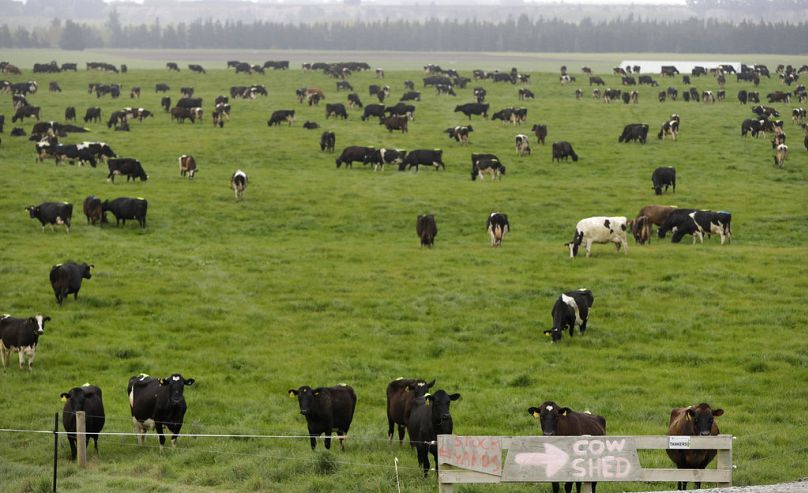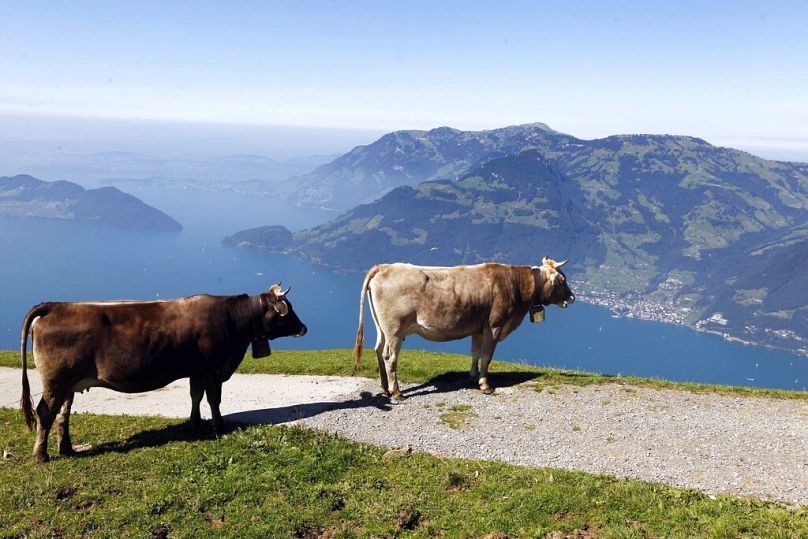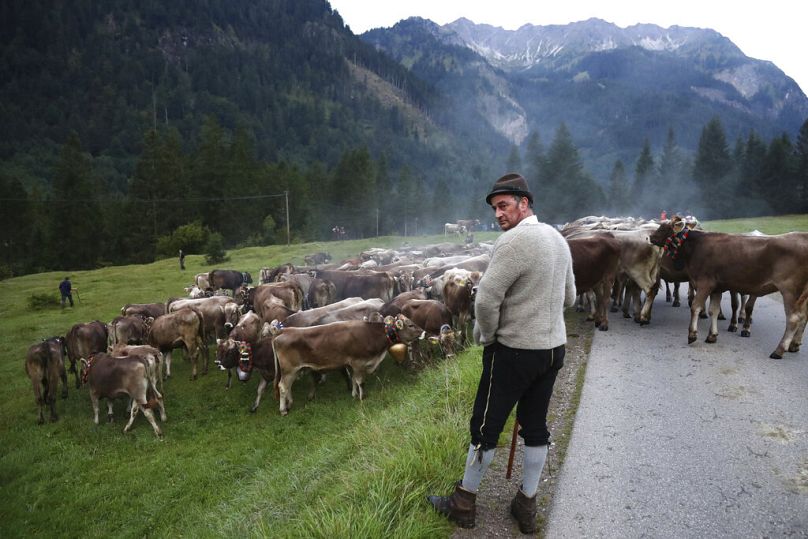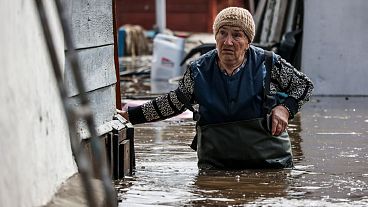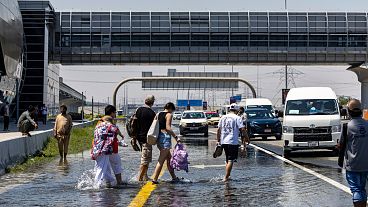Of all the climate solutions out there, maybe we should concentrate on the 97% of industrial emissions that come from fossil fuels, and leave the cows out of it, Eurof Uppington writes.
Given the press, you’d be forgiven for thinking that reducing cattle numbers and moving to a plant-based diet is a climate solution up there with electric vehicles and offshore wind.
Billions of dollars and euros and celebrity endorsements have been invested in plant-based and alternative protein startups. “Cows create global warming” is a truism of our time, shared by almost all right-thinking people.
The emerging truth appears different. Not only is the climate impact of cattle confused and overblown — properly managed, grazing cows and sheep can be a climate and biodiversity solution.
Meanwhile, the controversy takes attention away from real priorities: cutting dependence on fossil fuels and fixing farming to restore our landscapes and countryside.
The charge sheet: ruminants like cows and sheep burp methane, a gas 30 times more "greenhousey" than CO2.
The Amazon rainforest is being denuded for beef. A hamburger uses almost 3 tonnes of water.
The opportunity cost of the vast tracts of land used for pasture, or growing fodder is too high; it could be used to grow food for humans instead, or even better, rewilded, sequestering gigatons of carbon. Write in if I missed any.
The methane was already there
To understand the warming impact of ruminants we need to distinguish methane stocks (the amount in the atmosphere) versus flows (movements in and out of the atmosphere). Cow and sheep burps are part of a cyclical flow.
The methane, or CH4, comes from fermenting grass and cellulose in their rumen. The carbon, or C in the CH4, came from the plants they ate, which in turn came from atmospheric CO2 via photosynthesis.
Once out there, the CH4 eventually breaks down into CO2 again, ready to be photosynthesised.
It’s not clear that this is a net emission at all. If it is, it doesn’t much move the needle: according to the US EPA, enteric fermentation is only 2% of annual domestic GHG emissions.
True, methane does take 10 years to degrade, during which time it has a big heating impact. But if the stock doesn’t change, it doesn’t contribute to warming.
It would if the number of cows and sheep on the planet had massively increased in the past 20 years or so; instead, it’s climbed very gently.
The number of chickens over that time, on the other hand, has exploded.
It's soy, not beef
Which brings us to the Amazon. The real reason the rainforest has been cut down is for soy, not beef.
Since 1990, acreage in Brazil for soy has grown fourfold. Land area for pasture has actually declined. This makes sense, as an acre of soy is much more profitable than an acre of pasture.
Soy is a dual-use crop, providing vegetable oil for humans, with the remainder used to feed pigs and chickens.
Both oil and chickenfeed have been big growth markets over the past 30 years as Western diets have changed. Beef consumption is flat to down.
The water use argument is nonsense. Cattle get their water from pasture, which is wet because it’s rained on.
The rain falls anyway. Cattle don’t take water resources from other users unless they’re eating fodder in a feedlot.
Feedlots are nasty and horrible, and are prevalent mostly in the US, where cattle are fattened on corn and alfalfa for the last third of their lives. This can use lots of water, mostly for growing fodder. But many other countries (like Switzerland or the UK) don’t use feedlots.
Rumen is a feature, not a bug
The last charge against ruminants is that they take up land that could be put to better use.
This is a more complex argument, but equally specious — land isn’t fungible; you can’t use rangeland for crops, grow soy on an alp, or corn on a windswept Welsh hill. But you can use pasture to create nutrient-dense food; milk and meat, from otherwise undigestible grass.
This is the miracle of the rumen, a biological machine used for tens of thousands of years to support human populations and cultures where people would otherwise be unable to live.
Some would say that this is a bug, not a feature: get rid of ranchers, and rewild pasturelands to sequester carbon and restore biodiversity.
Instead of fodder, we could grow plants to replace the calories we currently get from meat and dairy and free up vast tracts for wilderness. Journalist and environmentalist George Monbiot has suggested just this, saying we could use precision fermentation to create artificial meat and dairy culinarily identical to the real thing.
But it’s an urbanist’s pipe dream: impractical, unscientific, and philosophically suspect.
Telling people what to eat rarely works. There is no pristine state of wilderness we can return to where humans don’t affect the environment — unless you mean the Pleistocene.
What do we do with families living off the land now? Tax them out of their homes, eradicate their culture? Or force them to live with re-animated cave bears and sabre-tooth tigers?
We need ruminants to keep our ecosystems healthy
Ironically, a great way to sequester carbon in soil is by using ruminants themselves.
Ruminants co-evolved with grasslands, a type of landscape with high carbon-storage potential. We need them to keep these ecosystems healthy.
Techniques like adaptive managed grazing can mimic the action of migratory herds such as bison, who grazed, fertilized, and moved on, building soil as they went, over millions of years.
There’s rarely been soil as carbon-rich as that the first settlers found on the American prairie; thick, black, incredibly fertile, and 10 meters deep. All gone now, but to some extent retrievable.
So of all the climate solutions out there, maybe we should concentrate on the 97% of industrial emissions that come from fossil fuels, and leave the cows out of it.
Better still, we can change the way we farm them to create a positive climate, health and animal welfare impact.
Until then, the only ones who benefit from a focus on the climate impact of ruminants are the oil bosses.
Eurof Uppington is the CEO and Founder of Amfora, a Switzerland-based importer of extra virgin olive oils.
At Euronews, we believe all views matter. Contact us at view@euronews.com to send pitches or submissions and be part of the conversation.
